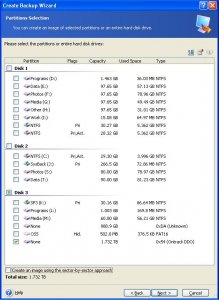
#Ptedit32 missing windows#
Log into Windows with an “administrator” level account.ģ. Dynamic Disk Overlay (DDO), often supplied by OnTrack or EZ-Drive: I had considered this as a suspect to explain the strange values occuring in the partition table. Ignore window from a.tribalfusion or ignore this link A disk editor can give a glimpse of parts of these error messages (beginning of track 0). Since the last partition table shown for this HD is garbage, it should generate some type of error message, or a wild transfer to the wild blue yonder.
#Ptedit32 missing code#
"Fdisk /mbr" restores the small piece of code to interpret the partition table. My post here is pretty well the extent of my knowledge about FDISK. įrom your previous post, it was not clear if FDISK was used and no change was observed. Utimate Boot CD has partition tools and a disk editor. I did not see a likely match in PM DOS folders. If all else fails, a disk editor gets you down to the byte level. If the disk structures are usable, it will read the MBR for the signature as part of the display for the boot record. Ptedit.exe is a dos command available from PM DOS folder, as well. The dos command "wrprog /rst track0.dat" write track 0 to the hard drive jumpered as master from the file a:\track0.dat. The dos command "wrprog /bak track0.dat" saves track 0 from the hard drive with the jumper signifying master to a file a:\track0.dat I am a control freak, so I try to anticipate problems and create save points. I believe that this occurs as the last 2 bytes of the partition tables at the end of the MBR. See įDISK /MBR - Partition Table structure is not altered.įT (fault tolerance) structures probably do not matter.ĭisk signature may matter. See įDISK has a slight limitation with respect to NT. Obtain from PM DOS folder.įDISK with no other command line options will not alter the MBR if one is detected. re-writes the first 446 bytes of the master boot record. In the future, I will try to master inserting a graphic in the actual post.įdisk /mbr. Once you go down this path, all this work could have been avoided by doing the FDISK. The only other way to create a boot record is formatting the drive, but this will reset the MFT when it is re-created. As a pure guess, that is about the only thing to change. In the boot record for field 16, subtract 1 from the Sectors entered into the table. It is possible that saving these edits will get the editor to detect or offer a boot record. All other partitions should be set to zeroes. This is the only part of the table with non-zero values. Use all the other values for Partition 1 (line 1). This means that you need to reduce the number shown under ‘Sectors’ by ‘ 189 ‘ (3*63). However, the ‘boot record’ button is not highlighted, which I interpret that it is missing.Īnyway, here is a screen shot for a 60G HD. I find it curious that the screen shot is for drive 1. field 17 = 786432 field 18 = 9767516Īs Nodsu observes, your partition table is fubar. The attached jpg files will print on 2 pages unless you shrink the image. I did not change fields 17 or 18 in the boot record. In my example, I worked on a small drive, FAT16B. cd \prog*\powerq*\part* )Īt the top of the window (PowerQuest Partition Table Editor) select the correct drive. Two attached files are screen shots showing the partition table and boot record for a 80G drive with a single partition, NTFS file system.Ĭhange directories to the directory with the file ‘ptedit32.exe’ (e.g. Ptedit32 repaired the partition table & boot record. The main screen (PM) designates the drive bad, and no operation can be performed on that drive.


I was able to create the condition where PM ‘fixes’ errors in the partition table and the result is PM screwed up. It is executed in the command prompt window. ‘ptedit32.exe’ is a disk editor that works on the partition tables and boot record. If this turns out to be true, I would not ever do FDISK or a low-level format for fear of losing this information. I did not find an explicit mention of the low-level format capability for either download.Ī far-out explanation - the defect table is so large that its significance is reported by PM because it has out grown its protected space.
#Ptedit32 missing download#
Go to the manufacturer’s web site & download their SeaTools Diagnostic file and the Installation file. If this suggestion does not solve the issue, then do a low-level format of the HDD.

It is possible this is the only way PM can get you to run chkdsk with surface scan fix option. HDDs maintain defect tables for bad blocks. It could indicate blocks lost by the FAT it could indicate bad blocks not maintain by the defect tables. ‘Bad’ is one of the allowed descriptors for partition space. Consult above link, technical section, 3rd bullet.


 0 kommentar(er)
0 kommentar(er)
